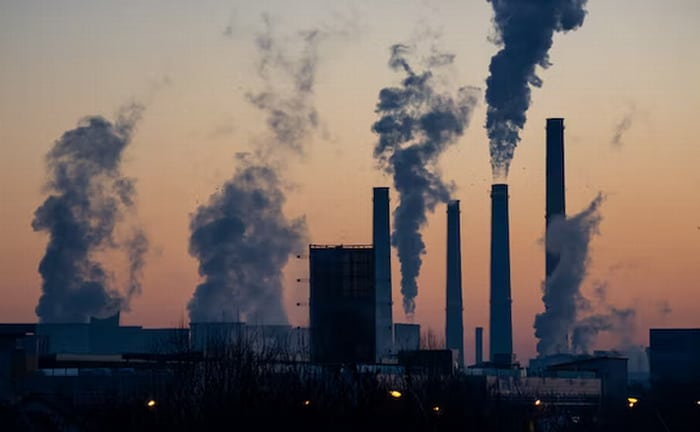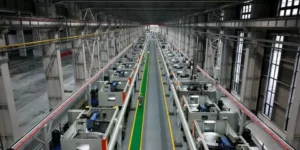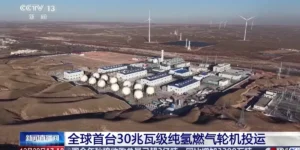Pros and Cons of Air Pollution

Air pollution is a critical global issue with widespread implications for the environment, public health, and economies. While the term “pros” in the context of air pollution might sound counterintuitive, it is essential to explore the multifaceted aspects of this problem fully. Let’s see what are the pros and cons of air pollution in today’s society.
Pros of Air Pollution
Enhanced Plant Growth
Some air pollutants, such as carbon dioxide (CO2), can act as fertilizers for plants. In controlled environments, elevated CO2 levels have been shown to improve crop yields, potentially benefiting agriculture.
Pest Control
Increased air pollution levels can deter or harm certain pests, potentially reducing insect-related diseases and crop damage in specific cases.
Industrial Advancements
The historical use of coal during the Industrial Revolution released pollutants into the air. These pollutants, while harmful, also played a role in driving industrialization, technological progress, and improving living conditions for many.
Cons of Air Pollution
Public Health Impacts
Air pollution poses a severe threat to human health. It is associated with various respiratory diseases, heart conditions, and premature mortality. Fine particulate matter and pollutants like nitrogen dioxide (NO2) and sulfur dioxide (SO2) are particularly harmful.
Environmental Harm
Air pollution disrupts natural processes, damages plant life, and contributes to acid rain. It has detrimental effects on ecosystems and can harm aquatic life when pollutants settle in bodies of water.
Contribution to Climate Change
Greenhouse gases like CO2 and methane are byproducts of air pollution. They play a significant role in global warming and climate change, resulting in rising temperatures and more frequent extreme weather events.
Economic Costs
Air pollution imposes substantial economic burdens, including increased healthcare expenses, decreased worker productivity, and damage to agriculture and other industries.
Diminished Quality of Life
Poor air quality limits outdoor activities and recreational opportunities, contributing to a general sense of discomfort and reduced quality of life for individuals living in affected areas.
Mitigation and Solutions
Given the substantial adverse impacts of air pollution, addressing this issue is imperative. Here are some strategies to mitigate air pollution:
Transition to Clean Energy
Moving away from fossil fuels and embracing clean energy sources like solar, wind, and hydropower can significantly reduce harmful emissions.
Improved Transportation Practices
Encouraging public transportation, carpooling, and the adoption of electric vehicles can help reduce emissions from the transportation sector.

Coal power plants in Europe have been restarted due to the war in Ukraine, image source: Unsplash
Enforcement of Stricter Regulations
Governments should rigorously enforce and enhance regulations related to emissions from industries and vehicles to limit pollutants.
Reforestation and Forest Protection
Planting trees and safeguarding forests can help absorb CO2 and filter pollutants from the air.
Public Awareness and Education
Promoting public awareness and educating individuals can inspire changes in behavior, leading to a reduced carbon footprint and a greater demand for cleaner air.
The Road to Cleaner Air: A Collective Responsibility
Addressing air pollution requires a concerted effort at all levels of society, from individuals to governments and industries. The responsibility to reduce the negative impact of air pollution falls on everyone’s shoulders. Here’s a closer look at some of the mitigation strategies that can help alleviate the cons of air pollution:
1. Public Health Measures
Promote Healthier Lifestyles
Encouraging individuals to lead healthier lives can mitigate the effects of air pollution. Diet, exercise, and avoiding smoking, especially in polluted areas, can help bolster the body’s defenses against pollution-related illnesses.
Healthcare Infrastructure
Investing in robust healthcare infrastructure, particularly in regions with high pollution levels, is crucial. This ensures timely medical care and support for those affected by pollution-related ailments.
Air Quality Alerts
Establishing air quality monitoring systems and disseminating alerts can help residents make informed decisions about outdoor activities on days when pollution levels are high.
2. Environmental Conservation
Sustainable Land Use
Implementing sustainable land-use planning can help reduce pollution. Urban design that promotes public transportation, walking, and cycling can decrease reliance on private vehicles and subsequently reduce emissions.
Green Infrastructure
Incorporating green infrastructure like urban parks, green rooftops, and green walls can enhance urban air quality by absorbing pollutants and improving overall quality of life.
Sustainable Agriculture
Implementing sustainable farming practices reduces agricultural emissions, conserves soil, and minimizes pollution of land and water resources.
3. Government Initiatives
Environmental Policies
Governments play a central role in mitigating air pollution by enacting and enforcing stringent environmental policies. These policies can target emissions from industries, vehicular traffic, and other sources.
International Cooperation
Since air pollution knows no borders, international cooperation is vital. Nations must collaborate to address cross-border pollution and establish emission-reduction goals.
Financial Incentives
Governments can offer financial incentives, such as tax breaks and subsidies, to encourage individuals and industries to adopt cleaner technologies and practices.
4. Technological Advancements
Clean Energy Sources
Continuing to advance clean energy technologies is crucial. Solar, wind, and hydropower, along with emerging technologies like carbon capture and utilization, can reduce emissions and reliance on fossil fuels.
Electric Vehicles
Promoting the adoption of electric vehicles and improving charging infrastructure can significantly decrease emissions from the transportation sector.
Air Pollution Control Devices
Research and development of air pollution control technologies can further reduce emissions from industrial processes.

Conventional vehicles are responsible for the massive air pollution produced in cities, image source: Unsplash
5. Public Awareness and Education
Environmental Education
Raising awareness about air pollution and its consequences through schools and community programs can lead to environmentally responsible behaviors and the demand for cleaner policies.
Community Engagement
Engaging communities in local environmental initiatives empowers residents to take action and create cleaner, healthier environments.
6. International Agreements
Paris Agreement
International agreements, such as the Paris Agreement, aim to limit global warming and its associated air pollution effects by reducing greenhouse gas emissions. Participation in these agreements is vital for achieving cleaner air on a global scale.
Conclusion
In conclusion, while there may be isolated examples of potential benefits associated with air pollution, these pale in comparison to the overwhelming negative consequences it poses. The health, environmental, economic, and societal costs of air pollution are profound, necessitating urgent action to address this critical issue. Transitioning to cleaner energy sources, improving transportation practices, and implementing stringent regulations are some of the steps necessary to combat air pollution and create a healthier, more sustainable future.






